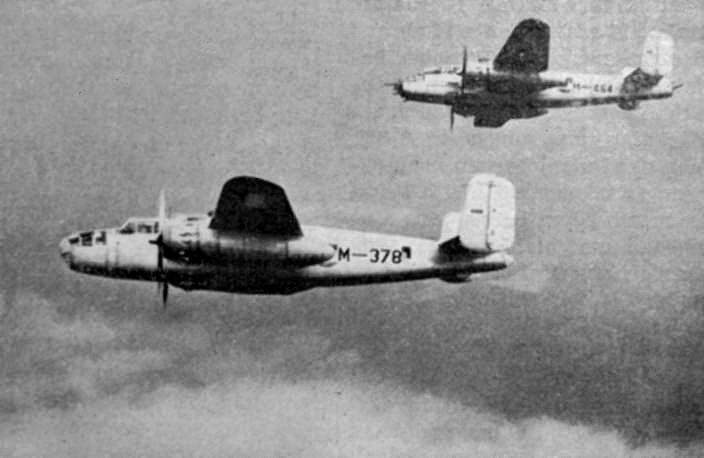
- PC平台
- MAC平台
- Linux平台
- 操作系统: Windows 7 SP1/8/10 (64位)
- 处理器: 2.2 GHz
- 内存大小: 4GB
- 显卡 DirectX 10.1级: AMD Radeon 77XX / NVIDIA GeForce GTX 660 (游戏支持的解析度最低为720P)
- 硬盘空间: 17 GB
- 操作系统: Windows 10/11 64位
- 处理器: 英特尔 Core i5
- 内存大小: 16 GB或更高
- 显卡 DirectX 11级或更高配置: Nvidia GeForce GTX1060 及更高,AMD Radeon RX 560 及更高
- 硬盘空间: 95 GB
- 操作系统: Mac OS Big Sur 11.0
- 处理器: 英特尔 Core i7 (不支持Intel Xeon系列)
- 内存大小: 6 GB
- 显卡: Intel Iris Pro 5100或同等的AMD/英伟达显卡(游戏支持的解析度最低为720P)
- 硬盘空间: 17 GB
- 操作系统: Mac OS Big Sur 11.0
- 处理器: Core i7 (不支持Intel Xeon系列)
- 内存大小: 8 GB
- 显卡: Radeon Vega II或更高,需要支持Metal
- 硬盘空间: 95 GB
- 操作系统: 大部分现代64位Linux系统发行版
- 处理器: 双核 2.4 GHz
- 内存大小: 4 GB
- 显卡: NVIDIA GTX660 及最新的显卡驱动(半年以内的版本) 或同等 AMD 显卡及最新的显卡驱动(半年以内的版本)。游戏支持的解析度最低为720P。显卡需要支持Vulkan API
- 硬盘空间: 17 GB
- 操作系统: Ubuntu 20.04 64位
- 处理器: Intel Core i7
- 内存大小: 16 GB
- 显卡: NVIDIA GTX 1060 及最新的显卡驱动(半年以内的版本) 或类似的 AMD 显卡(RX 560)及最新的显卡驱动(半年以内的版本)。
- 硬盘空间: 95 GB
Indonesian Air Force P-51
camouflage created by __StrafeMike__ | Download here!
A few hundred years ago, the vast oceanic archipelago of modern Indonesia had no identity nor social connections. Western exploration coined many names; the most common term for the time was the “East Indies”, ‘Indies’ originating from the Greek romanized word “Indus” referring to the Indus River centered in Pakistan (also the origin for name India). The name “Indonesia” also originated from Indus, with the Greek word “nèsos” for island. “Maritime Southeast Asia” and even “Malaysia” where other common names for this region.
 |
| B-25 Mitchell bombers of the Indonesian Air Force |
The Dutch (Netherlands) had claimed and colonised these island and were extensively trading in spices and exotic goods, creating huge profits and making the Netherlands a superpower, calling its holdings the “Dutch East Indies”. These activities also established many cities and communication links to the disparate islands, and a growing sense of national identity of the indigenous peoples.
A couple of centuries later, with the defeat of Japanese occupiers and its former Dutch rulers themselves ruined by the European conflict, the islanders seized the opportunity to declare their own independence from any foreign entity, effectively forming their own independant nation. Two days after Japan’s surrender on August 15th 1945, a political activist named Sukarno declared independence under the chosen name of “Indonesia” in defiance of the Dutch.
Sukarno was perceptive enough to see the growing might of Japan, and made early connections with them. He worked to end colonial rule and establish a pro-Japanese domestic governance only as a means to create an independent Indonesia. Awash with Japanese equipment after their defeat, Indonesia quickly took control, and even a number of Japanese personnel joined the Indonesians, viewed as partners in the cause of liberation rather than occupiers thanks to Sukarno’s efforts.
In short order Japanese aircraft were taken over; it was as simple as painting the lower half of the Japanese “Hiramaru” roundel white to serendipitously reflect the Indonesian flag. At best their collection was varied, with a mix of newer A6M series and Nakajima Ki-84 Hayate to older Ki-43 Hayabusa fighters and a variety of Mitsubishi bombers from the G3M to Ki-21 to Ki-67 and Nakajima Ki-49 Donryu, plus a handful of former American made Dutch aircraft. The Dutch quickly mobilized to regain control and soon launched air raids against the “rebel” fields destroying many aircraft on the ground; however they were not in a much better position and soon suffered air raids themselves as the Indonesians regrouped and launched effective counter attacks.
 |
| Nakajima Ki-43 Oscar flown by the Indonesian side in the War of Independence |
The Indonesian Air Force (Indonesian: Tentara Nasional Indonesia Angkatan Udara, TNI–AU) itself was formally founded on 9th April 1946 in the midst of the messy independence war as the fighting was not just against the Dutch with help from the UK, but also small areas seeking their own independence. Unable to secure power, and with growing international pressure, the Dutch finally capitulated in 1949, at which point the newly recognized and finally consolidated country of Indonesia was able to receive Spitfires, F4U’s, P-40’s, P-51’s, B-25’s, A-26’s and its first jets: de Havilland Vampires
Unfortunately, instability continued, resulting in a more authoritarian government and the movement to the Soviet sphere resulted in the acquisition of MiG-15s, 17s, 19s, 21s and Tu-16 bombers. An attempted coup weakened Sukarno, resulting in western leaning - General Suharto took power and an influx of modern western aircraft such as F-16’s and C-130’s. Due to questionable events in the 1990’s and subsequent embargos the pendulum has swung again; since 2003 Russian made Su-27s and Su-30s are equipping its fighter fleet. Expect to see more variety in the air force of this dynamic nation.
Author: Joe “Pony51” Kudrna





